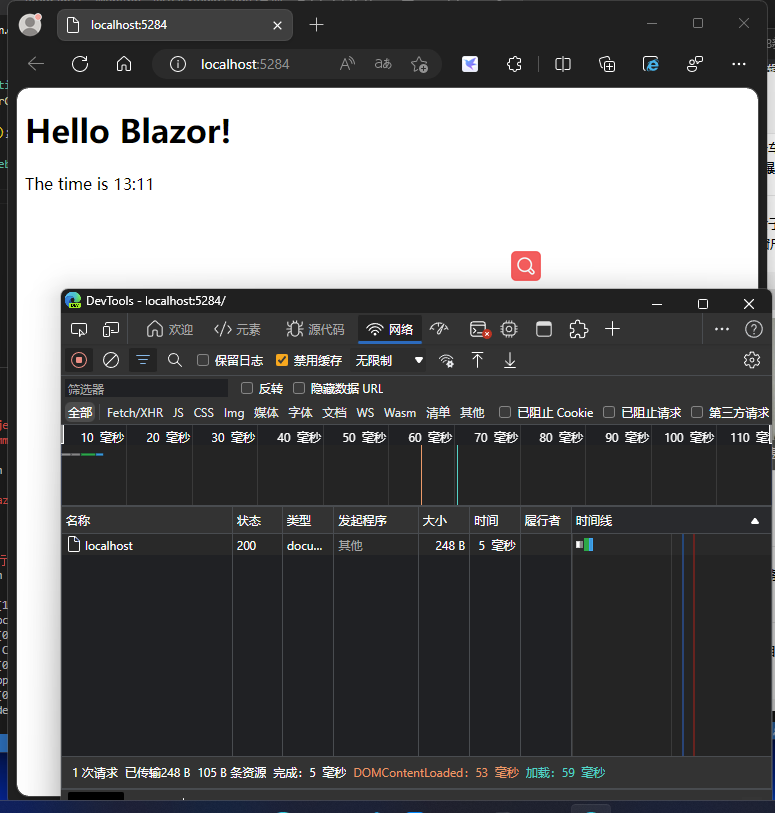由来: 需要封装一个通过Popover弹出框里可以自定义渲染内容的组件,渲染内容暂时有: 单选框, 复选框。在封装组件时我们需要权衡组件的灵活性, 拓展性以及代码的优雅规范,总结分享少许经验。

思路和前提
由于考虑组件拆分得比较细,层级比较多,为了方便使用了
React.createContext + useContext作为参数向下传递的方式。
首先需要知道antd的Popover组件是继承自Tooltip组件的,而我们的CustomSelect组件是继承自Popover组件的。对于这种基于某个组件的二次封装,其props类型一般有两种方式处理: 继承, 合并。
interface IProps extends XXX;
type IProps = Omit<TooltipProps, 'overlay'> & {...};对于Popover有个很重要的触发类型: trigger,默认有四种"hover" "focus" "click" "contextMenu", 并且可以使用数组设置多个触发行为。但是我们的需求只需要"hover"和"click", 所以需要对该字段进行覆盖。
对于Select, Checkbox这种表单控件来说,对齐二次封装,很多时候需要进行采用'受控组件'的方案,通过'value' + 'onChange'的方式"接管"其数据的输入和输出。并且value不是必传的,使用组件时可以单纯的只获取操作的数据,传入value更多是做的一个初始值。而onChange是数据的唯一出口,我觉得应该是必传的,不然你怎么获取的到操作的数据呢?对吧。
有一个注意点: 既然表单控件时单选框,复选框, 那我们的输入一边是string, 一边是string[],既大大增加了编码的复杂度,也增加了使用的心智成本。所以我这里的想法是统一使用string[], 而再单选的交互就是用value[0]等方式完成单选值与数组的转换。
编码与实现
// types.ts
import type { TooltipProps } from 'antd';
interface OptItem {
id: string;
name: string;
disabled: boolean; // 是否不可选
children?: OptItem[]; // 递归嵌套
}
// 组件调用的props传参
export type IProps = Omit<TooltipProps, 'overlay' | 'trigger'> & {
/** 选项类型: 单选, 复选 */
type: 'radio' | 'checkbox';
/** 选项列表 */
options: OptItem[];
/** 展示文本 */
placeholder?: string;
/** 触发行为 */
trigger?: 'click' | 'hover';
/** 受控组件: value + onChange 组合 */
value?: string[];
onChange?: (v: string[]) => void;
/** 样式间隔 */
size?: number;
}处理createContext与useContext
import type { Dispatch, MutableRefObj, SetStateAction } from 'react';
import { createContext } from 'react';
import type { IProps } from './types';
export const Ctx = createContext<{
options: IProps['options'];
size?: number;
type: IProps['type'];
onChange?: IProps['onChange'];
value?: IProps['value'];
// 这里有两个额外的状态: shadowValue表示内部的数据状态
shadowValue: string[];
setShadowValue?: Dispatch<SetStateAction<string[]>>;
// 操作弹出框
setVisible?: (value: boolean) => void;
// 复选框的引用, 暴露内部的reset方法
checkboxRef?: MutableRefObject<{
reset: () => void;
} | null>;
}>({ options: [], shadowValue: [], type: 'radio' });// index.tsx
/**
* 自定义下拉选择框, 包括单选, 多选。
*/
import { FilterOutlined } from '@ant-design/icons';
import { useBoolean } from 'ahooks';
import { Popover } from 'antd';
import classnames from 'classnames';
import { cloneDeep } from 'lodash';
import type { FC, ReactElement } from 'react';
import { memo, useEffect, useRef, useState } from 'react';
import { Ctx } from './config';
import Controls from './Controls';
import DispatchRender from './DispatchRender';
import Styles from './index.less';
import type { IProps } from './types';
const Index: FC<IProps> = ({
type,
options,
placeholder = '筛选文本',
trigger = 'click',
value,
onChange,
size = 6,
style,
className,
...rest
}): ReactElement => {
// 弹窗显示控制(受控组件)
const [visible, { set: setVisible }] = useBoolean(false);
// checkbox专用, 用于获取暴露的reset方法
const checkboxRef = useRef<{ reset: () => void } | null>(null);
// 内部维护的value, 不对外暴露. 统一为数组形式
const [shadowValue, setShadowValue] = useState<string[]>([]);
// value同步到中间状态
useEffect(() => {
if (value && value?.length) {
setShadowValue(cloneDeep(value));
} else {
setShadowValue([]);
}
}, [value]);
return (
<Ctx.Provider
value={{
options,
shadowValue,
setShadowValue,
onChange,
setVisible,
value,
size,
type,
checkboxRef,
}}
>
<Popover
visible={visible}
onVisibleChange={(vis) => {
setVisible(vis);
// 这里是理解难点: 如果通过点击空白处关闭了弹出框, 而不是点击确定关闭, 需要额外触发onChange, 更新数据。
if (vis === false && onChange) {
onChange(shadowValue);
}
}}
placement="bottom"
trigger={trigger}
content={
<div className={Styles.content}>
{/* 分发自定义的子组件内容 */}
<DispatchRender type={type} />
{/* 控制行 */}
<Controls />
</div>
}
{...rest}
>
<span className={classnames(Styles.popoverClass, className)} style={style}>
{placeholder ?? '筛选文本'}
<FilterOutlined style={{ marginTop: 4, marginLeft: 3 }} />
</span>
</Popover>
</Ctx.Provider>
);
};
const CustomSelect = memo(Index);
export { CustomSelect };
export type { IProps };对content的封装和拆分: DispatchRender, Controls
先说Controls, 包含控制行: 重置, 确定
/** 控制按钮行: "重置", "确定" */
import { Button } from 'antd';
import { cloneDeep } from 'lodash';
import type { FC } from 'react';
import { useContext } from 'react';
import { Ctx } from './config';
import Styles from './index.less';
const Index: FC = () => {
const { onChange, shadowValue, setShadowValue, checkboxRef, setVisible, value, type } =
useContext(Ctx);
return (
<div className={Styles.btnsLine}>
<Button
type="primary"
ghost
size="small"
onClick={() => {
// radio: 直接重置为value
if (type === 'radio') {
if (value && value?.length) {
setShadowValue?.(cloneDeep(value));
} else {
setShadowValue?.([]);
}
}
// checkbox: 因为还需要处理全选, 需要交给内部处理
if (type === 'checkbox') {
checkboxRef?.current?.reset();
}
}}
>
重置
</Button>
<Button
type="primary"
size="small"
onClick={() => {
if (onChange) {
onChange(shadowValue); // 点击确定才触发onChange事件, 暴露内部数据给外层组件
}
setVisible?.(false); // 关闭弹窗
}}
>
确定
</Button>
</div>
);
};
export default Index;DispatchRender 用于根据type分发对应的render子组件,这是一种编程思想,在次可以保证父子很大程度的解耦,再往下子组件不再考虑type是什么,父组件不需要考虑子组件有什么。
/** 分发详情的组件,保留其可拓展性 */
import type { FC, ReactElement } from 'react';
import CheckboxRender from './CheckboxRender';
import RadioRender from './RadioRender';
import type { IProps } from './types';
const Index: FC<{ type: IProps['type'] }> = ({ type }): ReactElement => {
let res: ReactElement = <></>;
switch (type) {
case 'radio':
res = <RadioRender />;
break;
case 'checkbox':
res = <CheckboxRender />;
break;
default:
// never作用于分支的完整性检查
((t) => {
throw new Error(`Unexpected type: ${t}!`);
})(type);
}
return res;
};
export default Index;单选框的render子组件的具体实现
import { Radio, Space } from 'antd';
import type { FC, ReactElement } from 'react';
import { memo, useContext } from 'react';
import { Ctx } from './config';
const Index: FC = (): ReactElement => {
const { size, options, shadowValue, setShadowValue } = useContext(Ctx);
return (
<Radio.Group
value={shadowValue?.[0]} // Radio 接受单个数据
onChange={({ target }) => {
// 更新数据
if (target.value) {
setShadowValue?.([target.value]);
} else {
setShadowValue?.([]);
}
}}
>
<Space direction="vertical" size={size ?? 6}>
{options?.map((item) => (
<Radio key={item.id} value={item.id}>
{item.name}
</Radio>
))}
</Space>
</Radio.Group>
);
};
export default memo(Index);个人总结
- 用好typescript作为你组件设计和一点点推进的好助手,用好:继承,合并,, 类型别名,类型映射(Omit, Pick, Record), never分支完整性检查等. 一般每个组件单独有个types.ts文件统一管理所有的类型
- 组件入口props有很大的考虑余地,是整个组件设计的根本要素之一,传什么参数决定了你后续的设计,以及这个组件是否显得"很傻",是否简单好用,以及后续如果想添加功能是否只能重构
- 另一个核心要素是数据流: 组件内部的数据流如何清晰而方便的控制,又如何与外层调用组件交互,也直接决定了组件的复杂度。
- 一些组件封装的经验和模式:比如复杂的核心方法可以考虑使用柯里化根据参数重要性分层传入;复杂的多类别的子组件可以用分发模式解耦;以及一些像单一职责,高内聚低耦合等灵活应用这些理论知识。
到此这篇关于React封装CustomSelect组件思路的文章就介绍到这了,更多相关React封装CustomSelect组件内容请搜索阿兔在线工具以前的文章或继续浏览下面的相关文章希望大家以后多多支持阿兔在线工具!



